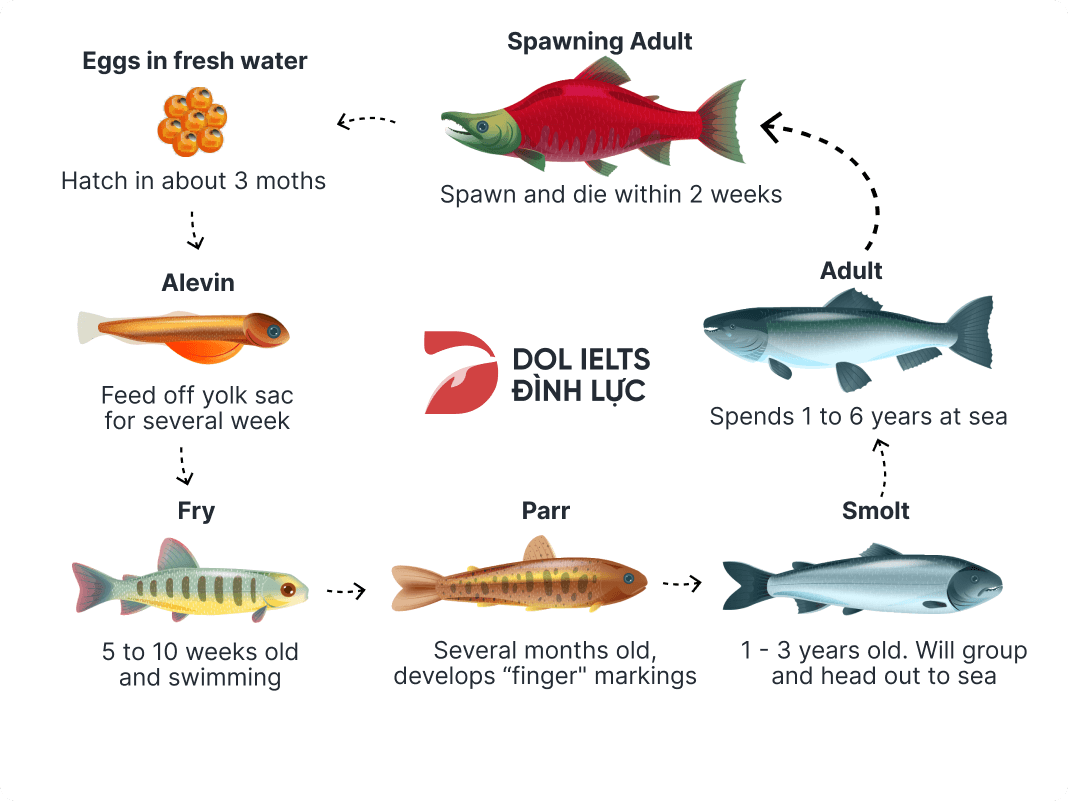The diagram illustrates how a salmon grows during its lifespan.
Overall, it is visible that this cyclical process consists of seven steps, commencing with eggs to hatch into tiny salmon and continuing until it become fully-grown adults and die.
At the beginning of the process, the female fish finds an optional spawning place in fresh water to lay a massive number of eggs and then these eggs are incubated for 3 months. Subsequently, eggs hatch into a tiny fish to be commonly called Alevin and it feed off yolk sac to ensure that it had enough nutrients to grow. After several weeks, it turns into a Fry which is 5 to 10 weeks old. At this stage, it begin to swim and feed for itself.
The process continues with the Fry starting to grow into a Parr and it develops "finger" markings after several months old of development. Next, between the age of one to three years old, it grows bigger in size and is ready to form a group and head out to sea. The salmon continue to inhabit in the sea for 1 to 6 years before it is time to spawn. Following that, the spawning adult dies within two weeks and then cycle repeats itself.

6d357ce069e94645a.png
